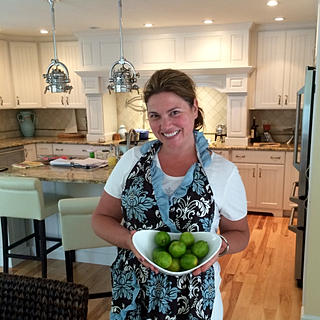Chicken Fricassee and Skillet Cornmeal Biscuits
- Tricia Cohen
- Feb 21, 2022
- 2 min read
Updated: Jan 2, 2023
The delicious, braised dish, Chicken Fricassee, dates to the mid-sixteenth century, though you could argue that more primitive versions were made much earlier. The first written version of this recipe comes from Le Viandier, the first professional French cookbook. The name is thought to be a combination of the words frire (to fry) and casser (to break into pieces). A fricassee is anything, mostly chicken, cooked (fried, braised, or sautéed) and served with a sauce. The sauce is generally white; however, there are many versions when the sauce is brown, which results from using wine and stock instead of cream.

"Halfway between a sauté and a stew" - Julia Child, about chicken fricassee
In time, Fricassee would be served throughout Europe. The London Art of Cookery by John Farley in 1811 made 27 versions of Fricassee, including everything from pigeon to tripe and many other undesirable proteins (I will stop going into too many details to save you from getting grossed out). The dish would soon cross the pond and make its way into America. The 1824 Virginia Housewife by Mary Randolph fricasseed salt cod, chicken, calf's feet, and eggs. The egg recipe was particularly fascinating, as it is a variation of Scotch Eggs. It was also in Mary’s cookbook that I noticed the use of spices in this dish; in her case, she used mace, a sister spice, to nutmeg. Fricassee would even find itself on the table of the White House under the watchful eye of the 16th President of the United States, Abraham Lincoln. According to A Treasury of White House Cooking by Francois Rysavy, Lincoln "liked the chicken cut up in small pieces, fried with seasonings of nutmeg and mace and served with a gravy of the chicken drippings." Lincoln was an intense thinker, so much so that he would often miss meals or eat mechanically through whatever was in front of him as he was often lost in thought. However, the meal that interested him would be Chicken Fricassee, especially if served with herbed biscuits. Perhaps some childhood memory was stirred in him as he dug into the hearty dish, or maybe he just liked it that much. But, of course, I could not leave out Fannie Merritt Farmer's version of Fricassee from her Boston Cooking School Cookbook in 1896. Fannie provides us with the first standardized measurement version of the recipe (ahh... finally, consistency!)
When this dish was created in France in the 16th century, it would have been considered complicated and prepared by a skilled chef. Today, my recipe is simple and delicious, and the results will make you look like a professional chef if you serve it with my skillet cornmeal biscuits!











